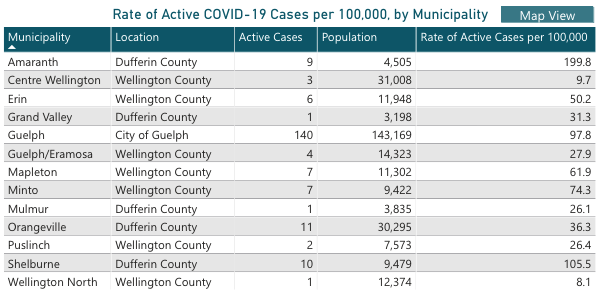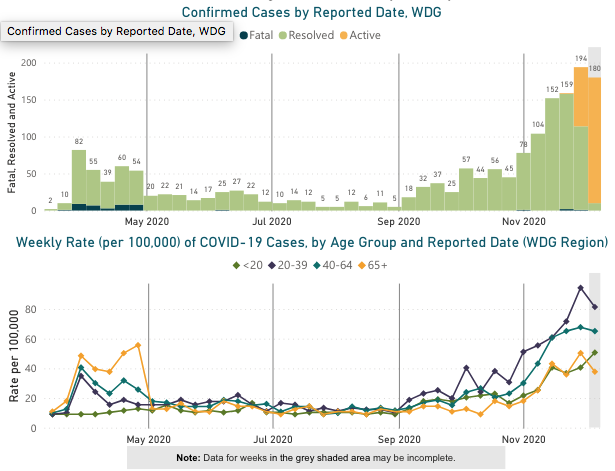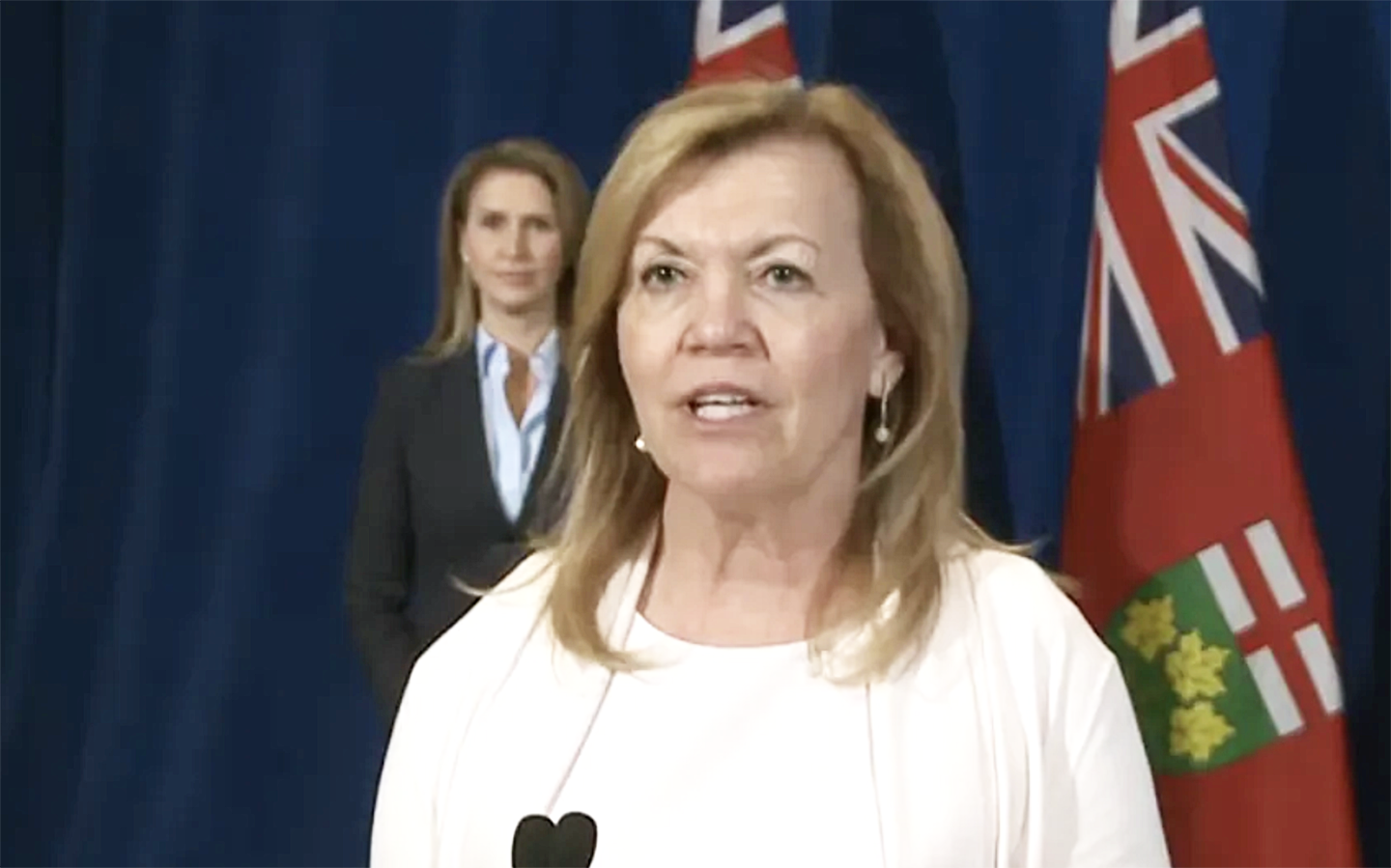WELLINGTON COUNTY – Local politicians and health officials for weeks warned residents that it could happen – and now it has.
On Dec. 11, the province announced it is moving the Wellington-Dufferin-Guelph Public Health (WDGPH) region into the red (control) level of its COVID-19 alert system, effective Dec. 14.
The latest changes to the province’s framework come as new modelling suggests the province could reach 5,000 daily cases – and the country 12,000 daily cases – by early January, if current containment measures are maintained.
“As we enter the holiday season and as the province prepares to receive its first shipment of COVID-19 vaccines, it remains crucial for all Ontarians to continue adhering to public health advice and workplace safety measures to reduce the spread of the virus and keep each other safe,” stated deputy premier and health minister Christine Elliott in a press release.
WDGPH’s move to the red level was recommended by Medical Officer of Health Dr. Nicola Mercer in recent meetings with provincial health officials.
The change lasts for a minimum of 28 days, meaning the earliest the region could move back to the orange (restrict) level is Jan. 11.
WDGPH joins six other regions in the red level: Waterloo, Halton, Hamilton, Durham and new additions Middlesex-London and Simcoe Muskoka.
York and Windsor-Essex will join Toronto and Peel in the lockdown (grey) level.
WDGPH reported 258 new COVID-19 cases in the week leading up to the moves (Dec. 4 to 10), the majority concentrated in the City of Guelph.
In Wellington County, case counts levelled off in early December, following a rough November that saw 230 new cases, with daily counts several times surpassing 20 and active cases often exceeding 60.
Yet regional indicators, such as case rate per 100,000 people and test positivity rate (84.2 and 3.3% respectively on Dec. 11), have risen steadily this month and for weeks have met the criteria for the red level.
“I want to tell every resident of our region, in the strongest possible terms, that COVID-19 is spreading very quickly in our community,” stated Mercer in a Dec. 9 press release.
“The rate at which cases continue to grow – especially in the last few days – requires immediate action.”
Mercer urged local residents to support “local businesses that will be impacted by this decision by shopping local for pickup or delivery.”

Rate of active cases in municipalities within the WDGPH region as of Dec. 11. (WDGPH image)
What’s changed?
The red level, the last step before a full lockdown, includes what the province calls “stringent” restrictions over and above those in place under the orange level.
For example, public events and social gatherings are limited to five indoors (down from 10) and 25 outdoors.
Restaurants and bars can seat a maximum of 10 people indoors (down from 50) with a limit of four per table. Outdoor dining, take out, drive through, and delivery us still permitted, including alcohol.
Gyms and fitness studios must restrict capacity to 10 (from 50) in areas with weights or exercise equipment, while organized sports have to cancel games and limit activity to practices/training.
Casinos must limit capacity to 10 people indoors or 25 people outdoors (down from 50 for both).
Theatres and cinemas must close, except for drive-in theatres and a few exceptions for rehearsing or performing a recorded/broadcasted event.
A full list of red-level restrictions is available on the Ontario government’s website.
‘The power to choose’
The province offers the following general advice for residents in regions in the red level:
- trips outside the home should only be for essential reasons (work, school, groceries/pharmacy, health care, assisting vulnerable individuals or exercise and physical activity);
- families should not visit any other household or allow visitors in their homes;
- everyone should avoid social gatherings; and
- work remotely, where possible.
“Each of us has the power to choose actions that help prevent the spread of the virus, that keep us safe, that keep our friends and family safe,” said Mercer.
“I’m asking everyone one of us to make those choices starting right now.
“Going to a dinner party or gathering right now may mean that your family is dealing with COVID-19 over the holidays.”
She also noted that on Dec. 9 the federal government approved the first COVID-19 vaccine for use in Canada.
“We can see hope on the horizon,” said Mercer.
“Please, please do everything you can to make sure that we all make it over the finish line together.”
The Dec. 11 press release from the province urged all Ontarians, “no matter where you live in the province,” to spend the holidays safely this year “by only celebrating in person with the people you live with and celebrating virtually with everyone else.
“People who live alone may have exclusive close contact with one additional household to help prevent feelings of isolation and mitigate against negative mental health impacts.”

These graphs show trends in confirmed cases of COVID-19 in the WDGPH region since March. (WDGPH image, Dec. 11)




